Marks, Johnny: Christmas songs
____________________________________________
page originally published on 22 December 2009; latest edit: 23 December 2023
____________________________________________
 Johnny Marks biography by Jason Ankeny for AllMusic:
Johnny Marks biography by Jason Ankeny for AllMusic:
JOHNNY MARKS
Best remembered for seasonal favorites like “Rudolph, the Red-Nosed Reindeer,” composer Johnny Marks was born in Mt. Vernon, NY on November 10, 1909. After attending Columbia University, he studied music in Paris, returning stateside to work as a radio producer; during World War II, Marks additionally produced entertainment for American troops stationed overseas.
In 1947, he was asked to write a song based on “Rudolph, the Red-Nosed Reindeer,” a poem written by his brother-in-law Robert L. May, a copywriter with the Montgomery Ward department store chain. Ward’s had already given away six million illustrated copies of May’s story before Marks even composed a note, but the song itself (popularized by Gene Autry’s 1949 recording) still sold over 30 million copies in the decades to follow, inspiring a beloved television special which premiered in 1964.
Marks also authored several other yuletide classics, including “Rockin’ Around the Christmas Tree,” “A Holly, Jolly Christmas,” “When Santa Claus Gets Your Letter,” and “Silver and Gold”; a member of the Songwriters Hall of Fame, he died September 3, 1985.
_____________________________
Johnny Marks links:
Christmas songs with words and music by Johnny Marks include:
- Rudolph the Red-Nosed Reindeer,
1949? - When Santa Claus Gets Your Letter, 1950

- (There’s Nothing Like) An Old-Fashioned Christmas, 1952
- Everyone’s a Child at Christmas, 1956
- A Merry, Merry Christmas To You, 1958 or 1959
- Rockin’ Around the Christmas Tree, 1958
- The Santa Claus Parade, 1959
- They Shined Up Rudolph’s Nose, 1959
- That’s What I Want for Christmas, 1963
- Silver and Gold, 1964
- A Holly, Jolly Christmas, 1964
- Jingle, Jingle, Jingle, 1964
- The Most Wonderful Day of the Year, 1964
- We Are Santa’s Elves, 1964
- A Caroling We Go, 1966
- Joyous Christmas, 1969
Marks also adapted songs from classic Christmas poems, and co-wrote a number of other Christmas and Holiday Season-themed songs with various songwriters including Gene Autry, Merle Travis, Carmen Lombardo, Tom Hagen, Cleve Moore, Sidney Danoff, and Marvin Brodie. Songs in these two categories include the following:
- 1952 — The Night Before Christmas Song — music by Johnny Marks; lyric adapted by Marks from the well-known Clement Clarke Moore poem, originally titled “A Visit from St. Nicholas” (1823). Marks’ adaptation was recorded as a duet by Rosemary Clooney & Gene Autry in 1952, and by the Ames Brothers in 1955.
- 1956 — I Heard the Bells on Christmas Day — music by Johnny Marks; lyric adapted by Marks from the 1863 poem “Christmas Bells” by the poet Henry Wadsworth Longfellow
- 1958 — Run, Rudolph, Run (w.m. Johnny Marks and Marvin Brodie) — first recorded by Chuck Berry, 1958*
- 1959 — Nine Little Reindeer (Merle Travis, Gene Autry, Johnny Marks) — recorded by Gene Autry, 1959
- 1961 — I’ll Be a Little Angel (w.m. Johnny Marks and Sid Danoff) — still a popular children’s song
Rudolph the Red-Nosed Reindeer is a character in a story and song of the same name. The story was created by Robert L. May in 1939 in response to a job assignment while employed as a copywriter with the retail company Montgomery Ward.
Biggreen65.tripod.com, a website evidently managed by the Dartmouth College Class of 1965, provides more details than the Wikipedia article. Here’s an excerpt from the page entitled “More About Rudolph“:
In 1939, Montgomery Ward asked one of their copywriters, 34-year-old Robert L. May, to come up with a Christmas story coloring book they could give away to shoppers as a promotional gimmick. May, rather sickly, shy and introverted as a child, based the story on his childhood feelings of alienation from children of his own age. As to the name, May considered and rejected Rollo (too cheerful) and Reginald (too British) before deciding on Rudolph.
May’s boss was worried that a story featuring a red nose — an image associated with drinking and drunkards — wasn’t exactly suitable for a Christmas tale. May responded by taking Denver Gillen, a friend from Montgomery Ward’s art department, to the Lincoln Park Zoo to sketch some deer. Gillen’s illustrations of a red-nosed reindeer overcame the hesitancy of May’s bosses, and the Rudolph story was approved…
Montgomery Ward distributed 2.4 million copies of the Rudolph booklet in 1939, and although wartime paper shortages curtailed printing for the next several years, a total of 6 million copies had been given by the end of 1946. The post-war demand for licensing the Rudolph character was tremendous, but since May had created the story as an employee of Montgomery Ward, they held the copyright and he received no royalties.
Deeply in debt from the medical bills resulting from his wife’s terminal illness (she died about the time May created Rudolph), May persuaded Montgomery Ward’s corporate president, Sewell Avery, to turn the copyright over to him in January 1947.
The article The History of Rudolph the Red-Nosed Reindeer, at the site Altogether Christmas, says:
With rights to the Rudolph story in hand, May’s financial future was now secure and his life had taken a happier turn. In 1947, Rudolph the Red-Nosed Reindeer was released commercially in book form.
However, Rudolph’s popularity soared when May persuaded brother-in-law and songwriter Johnny Marks to create a song based on the story. In 1948 a nine minute cartoon, directed by Max Fleischer and featuring the song by Marks, was shown in theaters.
___________________________________
The 1948 Max Fleischer animated short film
In its profile of the fictional red-nosed reindeer called Rudolph, Wikipedia says:
Rudolph made his first screen appearance in 1944, in a cartoon short produced by Max Fleischer for the Jam Handy Corporation that was more faithful to May’s original story than Marks’ song, which had not yet been written.[11] It was reissued in 1949 with the song added.[11]
However, the above 1944 and 1949 dates claimed by Wikipedia are each disputable in light of the following facts:
- In the Library of Congress article titled “Rudolph the Red-Nosed Reindeer’s First Starring Film Role,” the Max Fleischer short film Rudolph the Red-Nosed Reindeer is dated 1948 and a copy of it is available for playback. No mention is made of an earlier version of the film, or of the alternate, probably later, version that features the Johnny Marks song “Rudolph the Red-Nosed Reindeer.” The title song written by Johnny Marks is absent from the film soundtrack, and Marks is unmentioned in the opening credits. The music which plays during the opening credits is a wordless, orchestra and choir version of “Silent Night.”
- Internet Movie Database, like the aforementioned Library of Congress article, dates the film 1948, and doesn’t mention a 1944 version or any version released before or after 1948. However, the Big Cartoon Database gives a tentative date of “December of 1944 (Estimate).”
Questions remain regarding the following:
- release date of the original Fleischer directed animated short film Rudolph the Red-Nosed Reindeer
- copyright date of the song ,” written by Johnny Marks
- release date of the revised version of the Fleischer film that includes the title song written by Marks
From a review at IMDB of the 1948 version of the Fleischer animated short, by Ron Oliver (revilorest@juno.com):
On a particularly foggy Christmas Eve, RUDOLPH THE RED-NOSED REINDEER turns his humiliating birth defect into a beneficial asset…
Two decades before Rudolph came to the small screen, Robert L. May’s enduring creation was given the Max Fleischer special touch in this nostalgic cartoon. Johnny Marks’ infectious song leads into the well-known story of Santa’s Winter weather troubles & how the bullied little deer saved the day/night. A few of the graphics are reminiscent of Fleischer’s splendid SUPERMAN series.
 The cartoon adds some new details to the story – Mama Rudolph in a dress & apron is a rather strange sight – but basically this version, narrated by Paul Wing, laid the groundwork for later adaptations. While rather obscure, if uncovered this would make a fine addition to a family’s Christmas Eve viewing.
The cartoon adds some new details to the story – Mama Rudolph in a dress & apron is a rather strange sight – but basically this version, narrated by Paul Wing, laid the groundwork for later adaptations. While rather obscure, if uncovered this would make a fine addition to a family’s Christmas Eve viewing.
_________________________
Rudolph the Red-Nosed Reindeer (1948?) — animated short short film
- Director: Max Fleischer
- Original Story: Robert L. May
- Screen Adaptation: Joseph Stultz
- Narration: Paul Wing
- Musical Director: Samuel Benavie
- Arrangements: James Higgins
Despite the date given by the video provider, the following video may contain a 1949 (or later) version of the film, as I’ve suggested above. As mentioned above, the Library of Congress has a 1948 version of the film that does not include the Johnny Marks song “Rudolph the Red-Nosed Reindeer” in its soundtrack, or any other song by Marks.
_________________________
Rudolph the Red-Nosed Reindeer (song) — 1949?
Robert L. May’s 1939 book in verse “Rudolph the Red-Nosed Reindeer” was first commercially published in 1947, the year in which he acquired the copyright to his work. In his Johnny Marks biography, Jason Ankeny indicates that 1947 was also the year that Johnny Marks, May’s brother-in-law, was asked to write a song based upon the poem. Most sources say that Marks wrote the song, adapting its lyrics from the poem, in 1949. Perfessorbill.com gives 1949 as the copyright date of the Johnny Marks song.
In a page on the song at GeneAutry.com, an excerpt from the book Public Cowboy No. 1: The Life and Times of Gene Autry, by the official Gene Autry biographer Holly George-Warren, includes the following quote of Johnny Marks which indicates that he wrote two very different melodies for the song, at stages separated by about a year:
“I thought about it for a while and sat down to write a song about it. That song was easily one of the worst songs ever written. Then about a year later I was walking down the street when a new melody came to me. It’s the only time that ever happened, and I have to admit, it’s a great melody.”
The popular Gene Autry recording of the song (issued as “Rudolph, the Red-Nosed Reindeer”) was made on 27 June 1949, according to an excerpt, found in a page on the song at GeneAutry.com, from the book Public Cowboy No. 1: The Life and Times of Gene Autry, by the official Gene Autry biographer Holly George-Warren. The same excerpt suggests that other major artists may have rejected offers to record the song before Autry was invited to do so:
Marks sent a demonstration recording to RCA Victor recording artist Perry Como, but the pop singer turned it down when the composer wouldn’t allow him to change any lyrics. Marks later confessed to Gene [Autry] it had been rejected by Bing Crosby and Dinah Shore as well.
The Autry recording, credited to Gene Autry and the Pinafores, was issued in 1949 on the 78 rpm singles Columbia MJV 56 (Sep 1949 release) and Columbia 38610 (Nov 1949 release), each backed with “If It Doesn’t Snow on Christmas” (Gerald Marks, Milton Pascal). This is the first recorded version listed by SecondHandSongs.com in its page on the song.
Gene Autry and the Pinafores, with orchestral accompaniment — recorded on 27 June 1949
________________
1964 animated TV Special
From Wikipedia:
 Rudolph the Red–Nosed Reindeer is a long-running Christmas television special produced in stop motion animation by Rankin/Bass. It first aired December 6, 1964, on the NBC television network in the USA, and was sponsored by General Electric under the umbrella title of The General Electric Fantasy Hour. The copyright year in Roman numerals was mismarked as MCLXIV instead of MCMLXIV.
Rudolph the Red–Nosed Reindeer is a long-running Christmas television special produced in stop motion animation by Rankin/Bass. It first aired December 6, 1964, on the NBC television network in the USA, and was sponsored by General Electric under the umbrella title of The General Electric Fantasy Hour. The copyright year in Roman numerals was mismarked as MCLXIV instead of MCMLXIV.
The special is based on the song by Johnny Marks, which was in turn taken from the 1939 poem of the same title written by Marks’ brother-in-law, Robert L. May. Since 1972, the special has aired over CBS, which unveiled a high-definition, digitally remastered version in 2005. As with A Charlie Brown Christmas and How the Grinch Stole Christmas, Rudolph no longer airs just once annually, but several times during the Christmas and holiday season. It has been telecast every year since 1964, making it the longest running Christmas TV special, and one of only four 1960s Christmas specials still being telecast (the others being A Charlie Brown Christmas, How the Grinch Stole Christmas, and Frosty the Snowman).
about the film:
Songs and the performer(s):
Jingle Jingle Jingle — Santa Claus (Stan Francis)
We Are Santa’s Elves — Santa’s Elves
There’s Always Tomorrow — Clarice (Janis Orenstein)
We’re a Couple of Misfits** — Rudolph and Hermey (Billie Mae Richards and Paul Soles)
Silver and Gold — Sam the Snowman (Burl Ives)
The Most Wonderful Day of the Year — Misfit Toys
A Holly Jolly Christmas — Sam the Snowman (Burl Ives)
Rudolph the Red Nosed Reindeer — Sam the Snowman (Burl Ives)
- WARNING — See these articles:
- 4 Bad Lessons ‘Rudolph The Red Nosed Reindeer’ Teaches Kids, by Jeff Benion, published at Cracked.com on 19 December 2010
- “I’ll Never See Rudolph the Same Way Again,” post by thesinglecell on 1 December 2011 at the site thesinglecell (https://thesinglecell.wordpress.com)
.
(below) video file from the page Rudolph The Red Nosed Reindeer, at archive.org
.video file from the page Rudolph The Red Nosed Reindeer (1964), at archive.org
___________________
Some recordings and performances of other selected Christmas songs by Johnny Marks:
When Santa Claus Gets Your Letter – 1950
Gene Autry – 1950
.
4-year-old Christopher – 1991
_______________
I Heard the Bells on Christmas Day – 1956
 Longfellow wrote “Christmas Bells” on Christmas Day 1863 in the midst of the American Civil War and the news of his son Charles Appleton Longfellow having suffered wounds as a soldier in the Battle of New Hope Church, VA during the Mine Run Campaign. He had suffered the great loss of his wife two years prior to an accident with fire. His despair in the following years was recorded in his journal.
Longfellow wrote “Christmas Bells” on Christmas Day 1863 in the midst of the American Civil War and the news of his son Charles Appleton Longfellow having suffered wounds as a soldier in the Battle of New Hope Church, VA during the Mine Run Campaign. He had suffered the great loss of his wife two years prior to an accident with fire. His despair in the following years was recorded in his journal.
The poem has been set to several tunes. The first tune was set in the 1870s by an English organist, John Baptiste Calkin, to his composition “Waltham”. Elvis Presley, the Mormon Tabernacle Choir, and Jimmie Rodgers have recorded this version. Less commonly, the poem has also been set to the 1845 composition “Mainzer” by Joseph Mainzer. Johnny Marks, known for his song “Rudolph the Red-Nosed Reindeer”, set Longfellow’s poem to music in the 1950s. Marks’ version has been recorded by Fred Waring and the Pennsylvanians, Ed Ames, Kate Smith, Frank Sinatra, Sarah McLachlan, Pedro the Lion, Harry Belafonte, Johnny Cash, The Carpenters, MercyMe, Bing Crosby, and Bette Midler. Marks’ composition is now generally accepted as the de facto version and is generally what is used for modern recordings of the song, though Calkin’s version is still heard as well. In 1990, John Gorka recorded his arrangement entitled “Christmas Bells”, which uses stanzas 1, 2, 6, and 7 of the poem. — source forgotten
Harry Belafonte
.
Bing Crosby with the Ken Darby Singers – 1956
____________________
Rockin’ Around the Christmas Tree
Wikipedia excerpt:
Although Decca released [Brenda Lee’s recording of Rockin’ Around the Christmas Tree] in both 1958 and again in 1959, it did not sell well until Lee became a popular star in 1960; that Christmas season, it hit #14 on the Billboard pop chart and turned into a perennial holiday favorite. It continued to sell well during the holiday season, hitting #5 on the Christmas chart as late as 1984. Brenda Lee’s recording still receives a great deal of airplay. Despite the song’s title, its instrumentation also fits the Country genre which Brenda Lee more fully embraced as her career evolved. Despite her mature-sounding voice, she recorded this song when she was only 14 years old. The recording featured Hank Garland’s ringing guitar. For decades, Brenda Lee’s recording was the only notable version of the song. Radio stations ranging from Top 40 to Adult Contemporary to Country Music to Oldies to even Adult Standards played this version.
Brenda Lee – 1958
.
______________
From the 1964 animated TV special Rudolph the Red-Nosed Reindeer:
Silver and Gold
Burl Ives (Sam the Snowman)
_____________________________
The Tiny Tree (1975)
The Tiny Tree is a 1975 animated TV Christmas special, produced by DePatie-Freleng Enterprises. The special features eight Johnny Marks songs (not all having Christmas or holidays themes) including two sung by Roberta Flack, “To Love and Be Loved” and “When Autumn Comes.” Flack also co-produced and co-arranged these two songs, with Leon Pendarvis. Buddy Ebsen is the narrator and voice of Squire Badger.
Song order:
I Heard the Bells on Christmas Day
Tell It to a Turtle
To Love and Be Loved
Minuet For Clarinet
When Autumn Comes
A Caroling We Go
A Merry, Merry Christmas To You
Joyous Christmas
“When Autumn Comes” in The Tiny Tree (1975)
.
When Autumn Comes — words and music by Johnny Marks
When autumn comes and summer is gone
Then will our love keep lingering on
Then will it fade like flowers that burst out in the spring
Will your sweet words be gone as birds take wing
A summer love can be like a rose
Beware the thorn where such beauty grows
Before the leaves start falling
Please say you’ll still love me dear
When autumn comes, when autumn comes each year
When autumn comes each year
_______________________
* Run, Rudolph, Run (w.m. Johnny Marks and Marvin Brodie) was originally recorded by Chuck Berry in 1958 and later covered by many. Berry’s single charted #69 on the Billboard Hot 100. On the label of (US) Chess 1714, the songwriting was incorrectly credited to “C. Berry Music & M. Brodie.”
** For the 1965 (second) airing of Rudolph, “We’re a Couple of Misfits” was replaced by another song, “Fame and Fortune,” at the insistence of General Electric. On the “Alternate Versions“ page, IMDb says:
The 1964 showing did not have Santa picking up toys from the Island of Misfit Toys at the end. A letter-writing campaign ensued and the new ending was added in 1965. Also in 1965, sponsor General Electric insisted on replacing the song “We’re a Couple of Misfits” with “Fame and Fortune”, a change that lasted until 1998, when “Misfits” was put back in.
The description of “Fame and Fortune” by IMDb on the “Soundtracks” page as an “Alternative version of “We’re A Couple of Misfits”” is inaccurate. They are entirely different and unrelated songs.
More additions, deletions, and other alterations were to come. See the following article, dated 16 December 2009. I originally found the article in a page at Yahoo! Voices, credited to Emily Shimp. On 14 December 2015, I noticed that the link was defunct, and after a brief search found what appears to be the same article, credited to “contributor,” at superforty.com. Then, on 22 December 2016, I found that the aforementioned page at superforty.com was defunct, and located the article, without an author credit, at the following page at sawpan.com:
- Rudolph the Red-Nosed Reindeer: The Butchering of a Holiday TV Classic (link defunct as of 12/5/2022)

















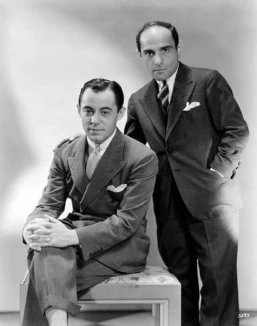

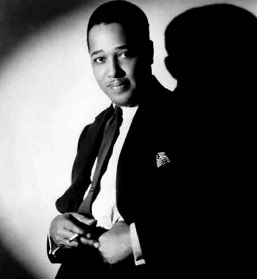


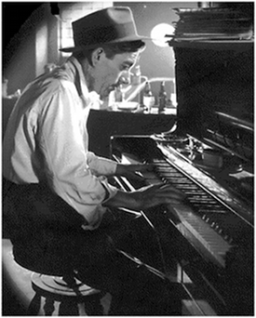
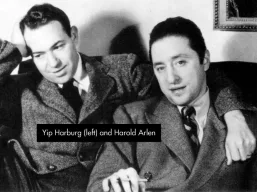




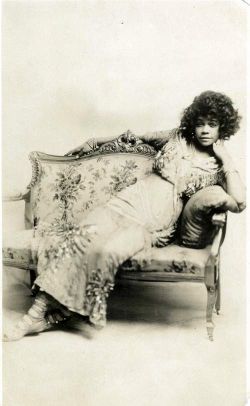










Nov 18, 2011 @ 22:04:37
A beautiful story that should be seen by all children Young and old.
Does anyone know if it is available in DVD?
LikeLike
Nov 18, 2011 @ 22:50:11
Rudolph the Red Nosed Reindeer (1964)
| Rated: NR | Format: DVD
Available at:
Amazon
LikeLike
Sep 23, 2015 @ 23:45:41
I would like to purchase a copy of the sheet music to I’ll be a little angel ..please let me know how to find it. Thank you.
LikeLike